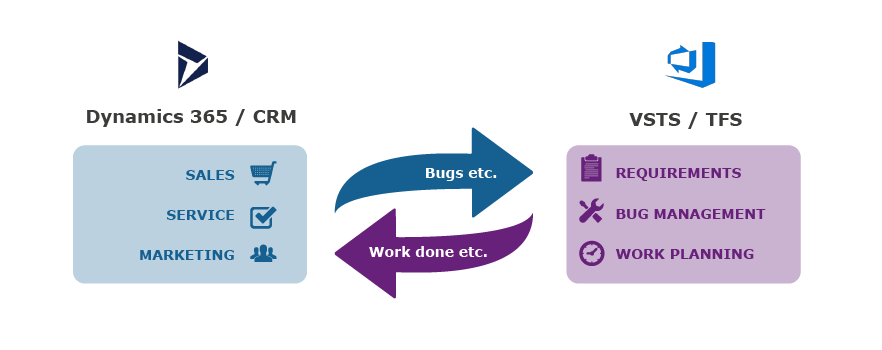CRM extended ALM connects business and engineering to support digital driven companies.
The Manifesto for Agile Software Development was published in 2001 to define the approach known as agile software development. One of the principles behind the agile manifesto indicates that the highest priority of software projects is to satisfy the customer’s needs through early and continuous delivery of valuable software. This statement has a big impact on the working routines of both software development departments and functional departments, because it implies a total customer-driven business strategy.
The process of becoming a customer-driven IT company requires changes in business strategy and routines, but also in the design-approach of information systems. An integrated IT landscape has to be established to provide the necessary information for agile software development and successful sales. Nowadays the standard working environments for developers are application lifecycle management systems (ALM), which include functionality for version control, task-, bug-, build-, delivery and test management. Sales people use customer relationship management (CRM) systems which include functionality especially for sales automation. In this scenario a nonintegrated IT landscape leads to an information gap and communication overload between sales department and software development. As a consequence customer requirements are often misunderstood and the wrong information is communicated.

| CRM: | ALM: |
|---|---|
|
|
To solve these problems PROLAN initiated the approach of CRM extended ALM. This approach combines the customer lifecycle management and the application lifecycle management by integrating the previous mentioned IT systems. It puts the sales persons in the comfortable position to be able to access information about current development processes, new features and bug fixing without requesting them asynchronously from the development department. Additionally, it represents a single point of information for the programmers. The Sales and Service departments escalate CRM cases, bugs and problems as work items directly to the development team.



Our Connector between Microsoft Dynamics 365/CRM and Microsoft Team Foundation Server / Azure DevOps/VSTS is prepared to work as a service to be available for customers with a moderate monthly fee and easy to set up and ready to run.
We faced many requirements around reliability, scalability and various security aspects.
CRMxALM.com is using Microsoft Azure in various ways to fit the requirements.
When we decided to build our Integration Service in the Cloud, it was a pleasure that Microsoft Azure gave us a robust, scalable environment with monitoring capabilities inside.
